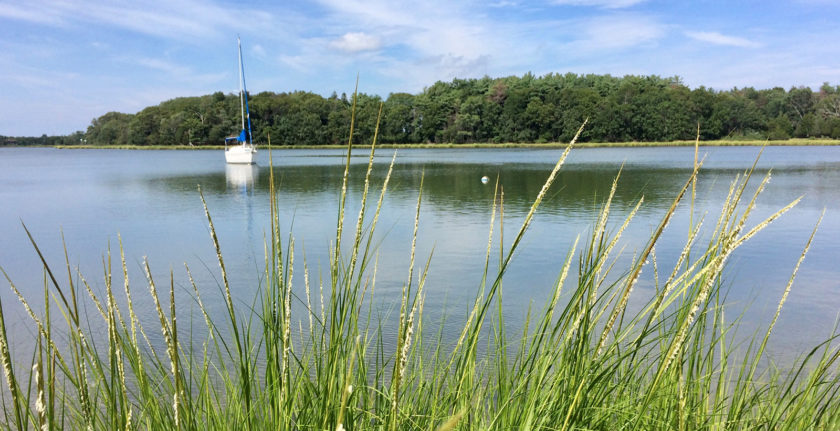Protecting & Restoring Long Island's Peconic Bays

The Best Management Practices (BMPs) identified as a part of this study, along with advantages and disadvantages, considerations including siting, permitting, funding availability, and factors that affect the level of nitrogen reduction, treatment details, including the influent source and associated nitrogen concentration and assumptions, and costs, including capital, operation and maintenance costs, and the cost per pound of nitrogen reduction, are available by category at the links below.
Nitrogen loading from human activities is causing widespread disruptions in Long Island’s coastal ecosystems, including the Peconic Estuary. From harmful and toxic algal blooms to low dissolved oxygen and degraded aquatic habitats, coastal waters are showing serious symptoms of nitrogen pollution that require action. Nitrogen pollution is an extremely complex issue to manage, and requires action by all levels of government, the public, and the agricultural and business community. Reducing nitrogen loading to the Peconic Estuary, especially via groundwater, has been identified as a top priority for the Peconic Estuary Partnership and Suffolk County. The Peconic Estuary Partnership 2015-2018 Action Plan includes numerous actions which aim to cost-effectively reduce nitrogen loads to levels identified in the Peconic Estuary Partnership Total Maximum Daily Load for nitrogen. This Peconic Estuary Nitrogen Load Reduction Cost Assessment implements action 2N of the Action Plan.
This Peconic Estuary Nitrogen Load Reduction Cost Assessment supports the Peconic Estuary Partnership and stakeholders in achieving nitrogen load reductions to groundwater in the PEP watershed by assessing the cost per pound of nitrogen reduction for an approved list of nature-based best management practices (BMPs). The list of BMPs appropriate for reducing nitrogen from the primary sources in the Peconic Estuary watershed, as well as information regarding the amount of nitrogen removal and associated costs was developed from information available from Suffolk County, Stony Brook University’s Center for Clean Water Technology, regional sources such as the Cape Cod and Chesapeake Bay Commissions, and the literature and in consideration of the geographic, environmental, and climate-based factors in eastern Suffolk County, as well as input and comment from the Peconic Estuary Partnership and its partners. Nitrogen removal estimates are based on the best available information. However, there are many variables that affect the efficacy of nitrogen removal processes that cannot be accounted for entirely due to the complexity of the nitrogen cycle and the fact that nitrogen forms change depending on specific microbial and physicochemical factors, and whether under terrestrial or aquatic conditions. BMP nitrogen performance may be optimized by consulting relevant guidance.
The map below provides a list of nitrogen reduction BMP available technologies for each parcel in the Peconic Estuary Watershed. Click arrows on the upper left to a list of available layers, and zoom in to select the layers to display on the map.
Sign up for News, Events and Information straight to your inbox.
